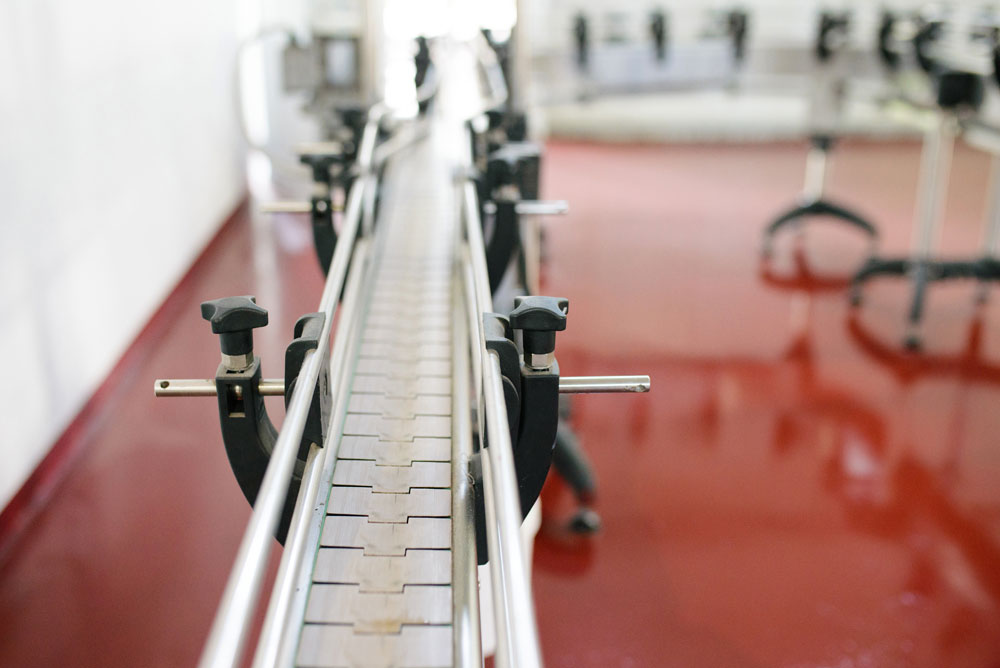Farms produce a significant amount of the food we eat or use to create food products.
Unfortunately, traditional farming has many downsides, and it is becoming more and more difficult for farmers to keep up with the growing population. It has even led more farmers to look into controlled environment agriculture as an alternative.
So what is controlled environment agriculture, and what makes it so appealing?
That’s what this article is about to cover—and more!
WHAT IS CONTROLLED ENVIRONMENT AGRICULTURE?
In the simplest of terms, controlled environment agriculture (CEA) is a type of farming where plants are grown within a controlled environment, such as greenhouses, vertical farms, and growth chambers.
CEA operations can range in size and technology, but all are designed to help increase production and provide optimal crop growth conditions while also preventing disease and pest damage.
The most advantaged CEA systems are fully automated and have controlled lighting, water, and ventilation.
WHY USE CEA AGRICULTURE?
Traditional agriculture is a leading source of pollution, deforestation, and a drain on natural resources—though it is still absolutely necessary because it produces food products for the human population.
However, traditional farming methods cannot keep up with the current increasing demand, which is where controlled agricultural environments come in.
The systems used to create CAEs do not rely on soil for plant production, and more importantly, controlled agriculture allows farmers to grow crops all year, have precise control of the conditions, and keep pests and potential contaminants away—regardless of weather conditions.
This means that farmers who use CEA methods will produce higher yields that are higher quality and more nutritious than their traditional farming counterparts.
BENEFITS OF CEA FARMING
CEA farming can completely transform how farmers produce food, and the farmers who have adopted the method have discovered several benefits that make CEA industry worthwhile. Some of the benefits include:
Higher Yields

CEA agriculture allows farmers to create the perfect environment for growing crops. They can control everything: how much light, heat, water, and nutrients plants
Crops grown in a CEA greenhouse or vertical farm are also more reliable because of the controlled environment and because no pests, bacteria, or diseases are trying to harm them. Since these methods can also allow farmers to grow more at once, the result is higher, healthier yields.
Crops Taste Better
Different crops grow best in different conditions. Plants like arugula, for example, develop a bitter taste when under stress. While not appealing to everyone, some enjoy the taste. CEA farming allows farmers to control things to create the perfect environment to develop that bitterness.
Less Labor
Traditional farming is a labor-intensive industry that requires many workers. Finding enough workers to staff these farms is becoming more difficult, but the work cost also takes a toll on farmers. Controlled environment agriculture doesn't require much human labor because much of the work is automated. It saves farmers money and the stress of finding a reliable workforce.
ENVIRONMENTAL BENEFITS
Traditional farming practices also carry quite a few negative impacts on the environment. By using controlled environment agriculture practices, farmers can reduce these negative impacts. For example:
Reduced Emissions used in Transporting Produce
Some crops don't grow well in certain areas. To get those foods to consumers, they typically must get imported, which creates CO2 emissions that are harmful to the environment. Not to mention, traditional farming methods require farmers to use a variety of farming equipment that also impacts the environment in a variety of ways. By using CEA methods, farmers can grow crops without these issues.
CEA Farming Requires Less Land
CEA farms typically grow crops vertically to use a significantly less amount of space. Despite using less space, they can grow significantly more food. The smaller footprint, therefore, means less deforestation and even more farming potential.
Reduced Pesticides and Other Chemicals
Traditional farming methods also require the extensive use of pesticides, where a CEA farming eliminates pest concern almost altogether.
That way, farmers don't need pesticides or other chemicals to treat pest-related issues, which results in naturally organic crops.
Less Food Waste
According to the UN, one-third of all food gets wasted; some, before the food even reaches the store, thanks to issues during harvesting or transportation. CEA technology makes it possible to automate the harvesting process, which helps to minimize waste.
With pest, disease, and climate concerns eliminated by CEA methods, waste will be virtually nonexistent.
Less Water Usage
Crops need water, regardless of how they are grown. Controlled agriculture uses significantly less water than traditional farming methods, with none getting wasted. Automation also means that farmers can better control watering schedules to ensure that no excess water is used during watering.
FOUR PIECES OF EQUIPMENT FOR CONTOLLED ENVIRONMENTAL AGRICULTURE
A lot of equipment is needed for CEA production. Here are four to help you get started:
1. Climate Control System
These are the heart of a CEA operation and can create the perfect crop-growing environment. It allows you to control the temperature, humidity, and CO2 levels. A quality climate control system will also automatically humidify or dehumidify the air.
2. Lighting
Lighting is another vital piece of equipment for CEA farming. LED lighting is a popular choice that, while expensive, will save you money in the long run and can be safest for plants, because the lights won't get hot and potentially burn the plants.
3. Watering and Nutrient Delivery Systems
Water and nutrients are essential for growing healthy, happy crops. Watering and nutrient systems will help ensure your crops get the right amounts without waste. Watering methods include drip irrigation, ebb and flow, and aeroponic misting systems.

4. Floor Drainage
Floor drainage is also vital for managing any water runoff from the watering and nutrient system. Drainage will allow floors to dry and prevent the growth and spread of bacteria and disease. The FoodSafe Drains Slot Drain is an NSF/ANSI/3-A-certified drainage system that is highly durable and perfect for installation in a controlled agriculture environment.
Its narrow channel doesn't need a drain cover and it blends seamlessly with the ground to become virtually invisible. Despite the size, it remains effective at draining and maintaining a safe, sanitary area.
FARMING OF THE FUTURE
Now that you know what controlled environment agriculture is, hopefully you, too, can see its potential.
CEA farming has many benefits that make it a superior option to traditional farming, and if you’re interested in getting involved in the CEA industry, the first thing you need to do is make sure that your greenhouse or building is set up with all the necessary equipment, including drainage.
Contact FoodSafe Drains to learn more about the Slot Drain and what it can do in a CEA greenhouse!


